Every Field Day setup is different, depending on location, number of people, access to trees, number of stations operating, and more. Chances are you’ve participated before and have a basic checklist of items you’ll need. It probably includes items like radios, antennas, generators, tables, chairs, shelter, food, and other necessities.
But sometimes you get that feeling that you left something behind. You’re not sure what it is, but you’ll find out soon enough, like when you discover the extension cord isn’t long enough or try to sit down and realize you left the folding chair at home.
Forehead slap, followed by “How could I forget that!”
We can’t prevent these awkward moments, but there are some items we’d suggest to make your Field Day experience more productive and comfortable.
Let There Be Light
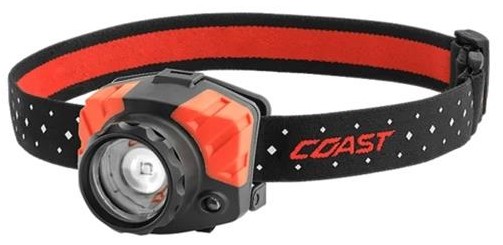
It’s nighttime and the glow from your transceiver’s dial isn’t quite enough to see your iambic keyer or the coffee cup you’re about to knock over. If you’ve got some power to spare from your generator, a gooseneck desk lamp will be a big help. If not, then a compact emergency lantern will last the entire Field Day (and then some) on a handful of batteries.
Need to do cable repair in the dark or find your way to the porta-john? A basic handheld flashlight will guide the way.
Comfort First
The operator can only tolerate what the seat will endure. The folding chair-in-a-bag is great for relaxing but awkward for serious operating. Our club president brings a large, comfy desk chair—fortunately, he has a truck to haul it to the FD site. However, a sturdy folding chair with upholstered seat and back will easily fit in most cars and provide reasonable comfort. If it’s a basic metal model, consider adding a memory foam cushion. What the heck, bring a foam cushion anyway.
Fold-in-half resin tables are compact and easy to carry. Most are also height-adjustable for a comfortable working area.
They also stand up to spilled coffee.
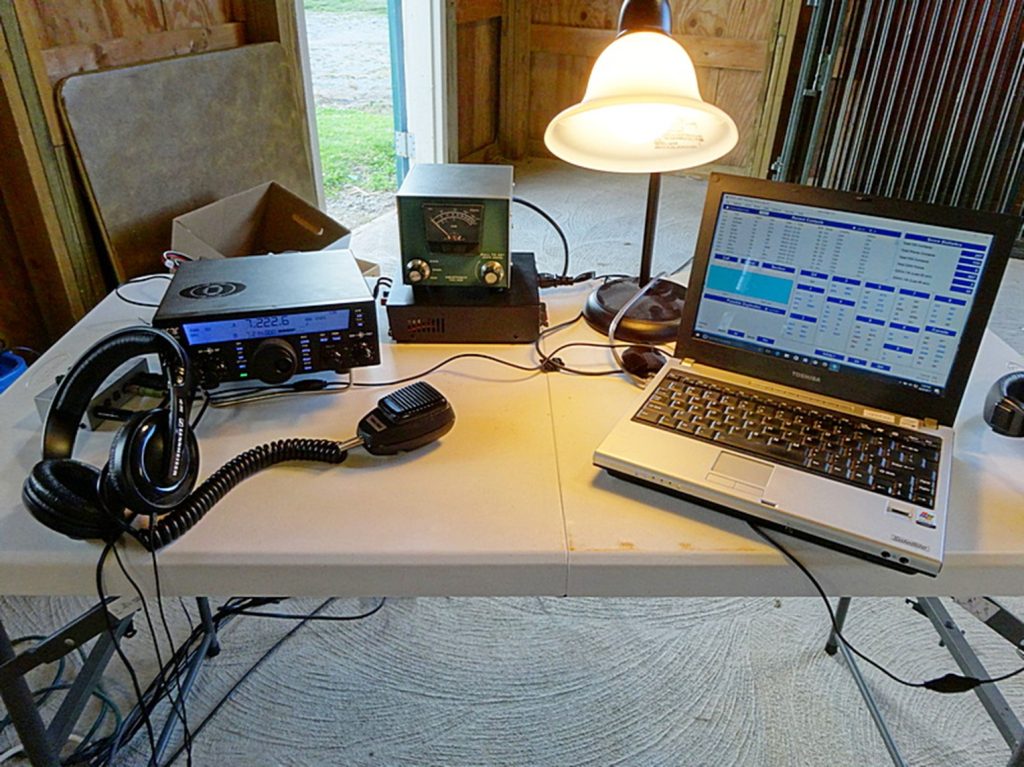
Keep Cool
Bring a fan. Small desk fans are a start, but large and quiet are better—think box fans. If you live in a warm, dry climate, misting fans can lower ambient air temperature up to 25 degrees F.
Tool Kits
Everyone has their own vision of the perfect tool kit. Most include socket sets, screwdrivers, pliers, wrenches, hammers, battery powered drills, long tape measures, spare hardware, and clamps.
There are other tools worth considering. One that tops our list is Vise-Grips. They can be used to hold small parts together temporarily and to clamp something quickly and securely in place. They’re also a great tool for ground rod or rebar stake extraction. Lock them in place near the top and twist the rod out.
A mini sledge is a close second. A two- to three-pound version is usually ideal for most jobs and better than a standard claw hammer for driving stakes and ground rods.
Square Peg, Round Hole
Our Field Day crew has tried to standardize audio, power, and RF connectors over the last few years. For the most part, it has worked. But once in a while we have to deal with an odd connection of some kind, replace worn connectors, or extend coax runs. Keep male and female versions of the coax adapters—UHF to N, BNC, or SMA and a good supply of SO-239 barrel connectors (below) for chronic feedline shortages. For audio adapters, 1/4 to 1/8 inch, 1/8 to 1/4 inch, and the mono/stereo versions are a good start.
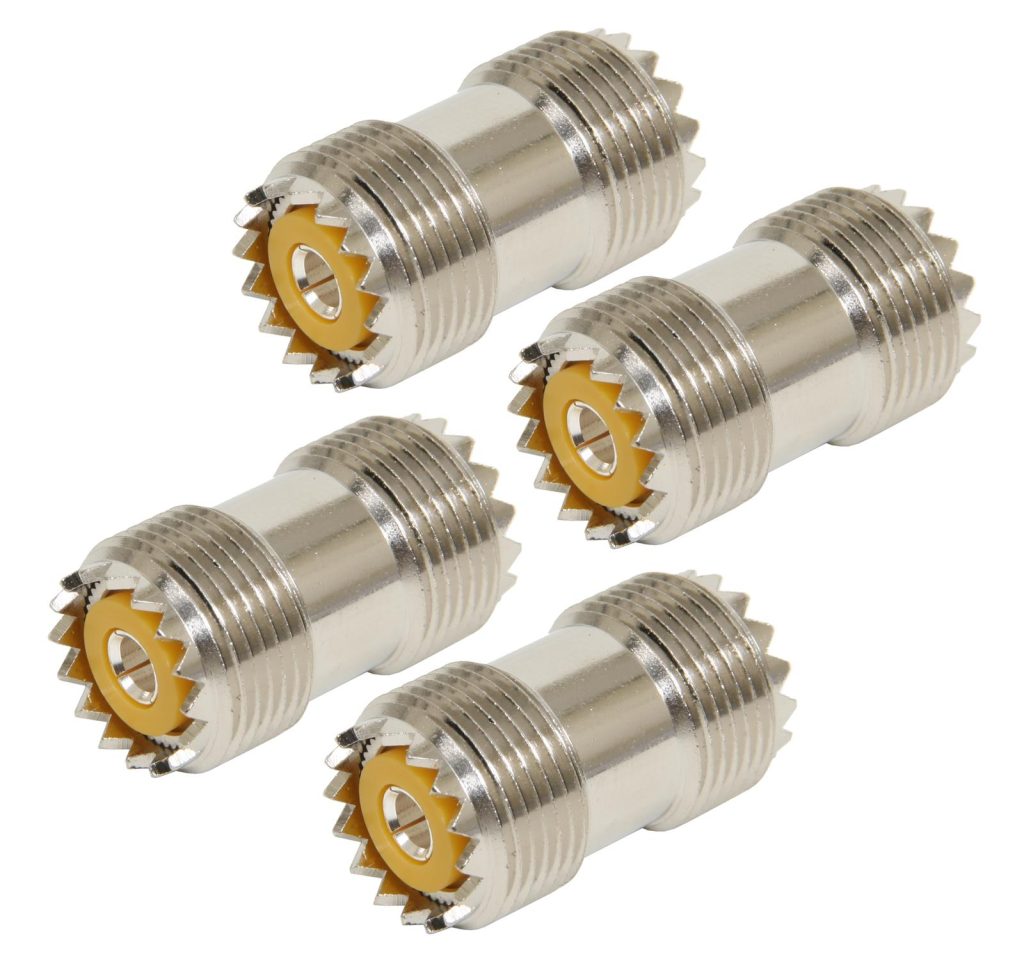
Anderson Powerpoles offer a standard for 13.8 VDC connections—one plug fits all and prevents accidental polarity reversals. Four-way splitters are handy for multiple station items like radios, tuners, and keyers.
Electronic Repair & Diagnosis
Antenna analyzers are a must for tuning antennas and checking feedline. The RigExpert STICK-230 (below) fits easily in a pocket and has a long battery life.
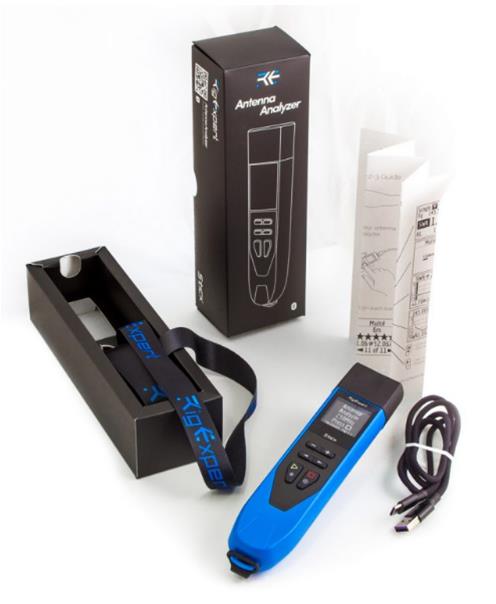
Digital multimeters can help with continuity checks, voltage/amperage readings, and battery solar cell and power supply diagnosis. Include a comprehensive tool kit with everything you might need for quick fixes: soldering iron and solder, electrical tape, wire cutters and strippers, crimp tools, screwdrivers, coax prep tools, and spare PL-259 connectors.
Rebar, Zip Ties & Gaffer Tape
You can’t have enough stakes. But when shopping the big box stores, I found plastic, wood, and not-so-rugged metal versions. The more durable rebar pieces cut into one-, two-, or four-foot sections appear to be a sturdier choice for guy lines. Keep them driven close to the ground or mark them clearly so as not to be a hazard.
You can use two- or four-foot rebar to help keep your tent pole or light telescoping masts from sliding around while you do your guying setup. Drill a 5/8-inch hole in the center of a small scrap of plywood or 2 x 6 stud, then place it on the ground to protect the pole. Drive the rebar into the ground through the hole, leaving about a foot or so protruding. Slide the mast over the rebar. You may want to protect fiberglass poles by inserting a slightly smaller diameter piece of PVC inside the bottom of the mast.
Zip ties? They’re probably one of the handiest inventions ever made. The obvious use is for bundling cable and rolling it up neatly for next year’s Field Day. Break a zipper-pull on your backpack or a shoelace—replace it with a zip tie loop. Use multicolor zip tie kits to color code wires. Flag cable ties let you easily identify or mark items.
Leave your duct tape at home. Sure, it will work, but it leaves a sticky residue when it’s removed or relocated. Gaffer tape leaves little to no residue when removed. With gaffer tape, you can secure cords and gear, mark spots, label and mark gear, etc., and then remove the tape without mucking up your stuff.
Backup Equipment
Test it before Field Day and it will work. Use it during Field Day and it might fail. Murphy’s law will prevail: “Anything that can go wrong will go wrong, and at the worst possible time.”
Be prepared to replace an entire station or parts of it: power supply, radio, microphone, headphone, tuner, patch cables, etc. Having these available for quick replacement will ensure your downtime will be minimal. The same applies to antennas—have some pre-built substitutes and coaxial feedline ready as replacements.
DOA laptop computer? It’s always a good idea to have a backup on hand, as well as chargers and spare batteries for all your computers.
Do you have a backup generator like the A-iPower 2,000W SUA2000I portable inverter model available? You should.
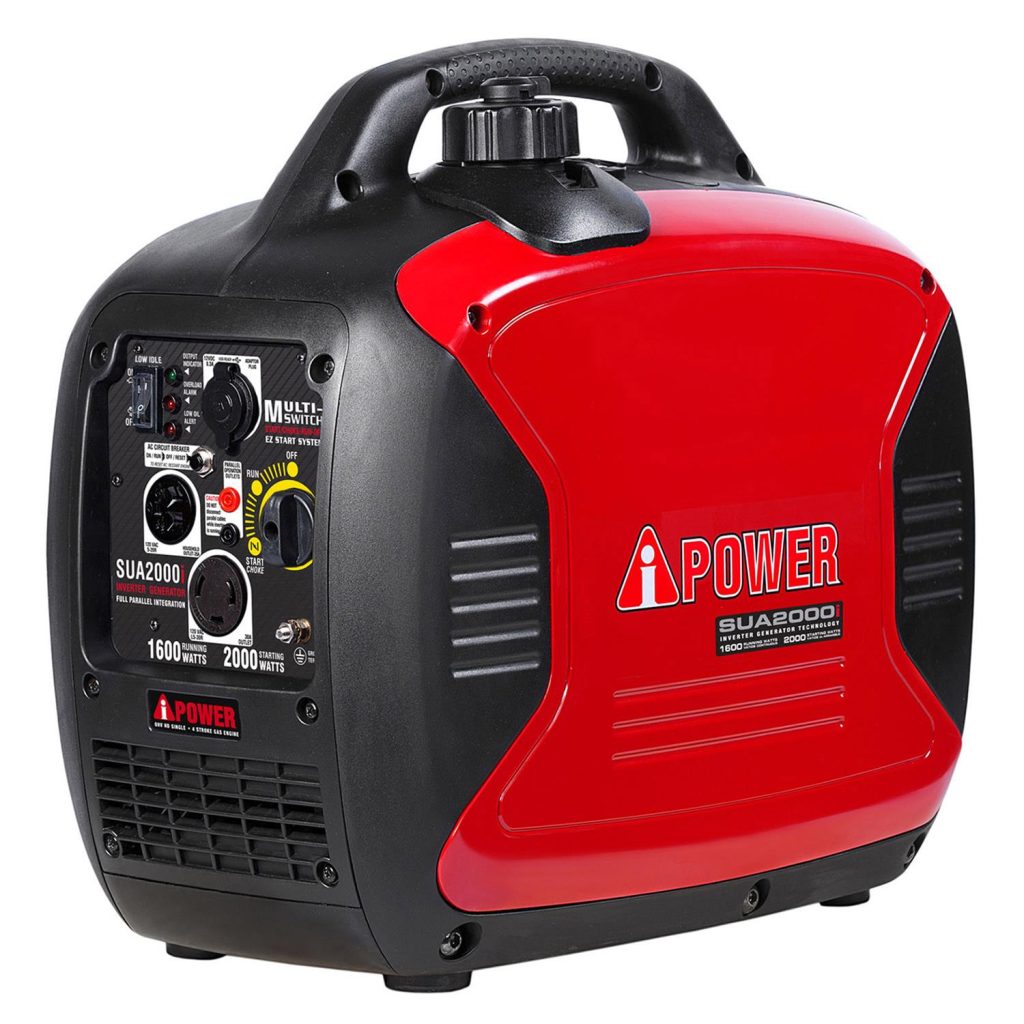
Odds & Ends
Here’s a list of miscellaneous items that you might also find useful:
- Plastic wrap for waterproofing connections
- Magnet to retrieve parts dropped in the grass
- Magnifying glass
- Common mode chokes for antennas
- Grill lighter to seal ends of paracord
- An RF noise filter for generators
- Tags or address labels on everything you bring so you get them back
This is by no means an exhaustive list of all the items you might need. Hopefully, we’ve suggested some things you can use. To paraphrase a line from a Rolling Stones song, “You don’t always bring what you want. But if you try sometimes, well, you might find, you’ll bring what you need.”

